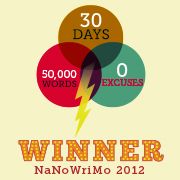Welcome to my weekly series “Designing from Bones”, using archaeology and the artifacts of human history to find and design stories. Join me today as we take a look at the macabre history of human sacrifice and cannibalism.
We must walk carefully today my friends. The gods are feeling abused and upset and only our beating hearts will appease them. Follow me now to the blood-stained altar and hear the cries of the fallen.
Sacrifice
Human sacrifice dates back to the mists of prehistory. Humans have met tortured ends to gain the gods favor, appease their anger when crops failed or beg their mercy when disease tore through a population. Others have been put to the knife to celebrate a victory or great accomplishment. For instance, in 1487 upwards of 80,000 prisoners were sacrificed over the course of four days in celebration of the re-consecration of the Grand Aztec temple at Tenochtitlan.
Yet another reason to sacrifice humans comes from the burial of great leaders. Say you are a wealthy ancient Egyptian and believe that you will live again in the afterlife. Who will serve you in this new realm? Well, the twenty servants, concubines and wives you’ve arranged to have sacrificed upon your death, of course. Who says one can’t take it all with them.
You may or may not be familiar with auguries. An augury is the sacrifice of an animal followed by the ritualistic reading of its entrails or other various parts as a means to see into the future. The Romans were so committed to this practice that troops would not even consider entering battle without an appropriate augury being performed to prove they would be victorious.
However, did you know that the Celts were known to do auguries on humans? According to the Greek geographer Strabo, the Celts would strike down a victim or lay them open with a sword after which the Druids would predict the future based on the dying persons convulsions or entrails. Divination grotesque.
Okay, so what can the writer take from all of this? I think we find the answer when we look at the situations surrounding the uses of human sacrifice and its various victims.
Imagine our hero as a prisoner familiar with the Aztecs love of human sacrifice. Would he not try to start an uprising to provide himself cover to escape this impending doom? Or perhaps he has an Aztec lover thus adding tension, intrigue and romance to the story?
What if our hero were an explorer that happened to be present at the time of the temple celebration, an invited guest at the consecration ceremony and bearing witness to the mass murder of tens of thousands? How would he react to this? Disgust, outrage, fear of becoming a potential victim, all of the above?
What if our heroine was the young wife of an aging and lecherous Egyptian sure to want her pleasures in the afterlife? How does she escape this fate without gaining stigma or dishonor that would lead to a public execution? Or will fate win? What if our hero is a servant that is constantly told what will happen to him after the masters death, and then the master dies? Can you smell the first plot point? I sure can.
What if our hero were a Celt requiring a special augury to unite the people in the face of a Roman invasion but to ensure an accurate prediction the Druids ask that someone close to him, a wife or daughter, be sacrificed? Try the story from the perspective of the perspectives of the hero and the proposed victim and feel the drama.
Try this in almost any time or place where a primitive people is faced by a superior foe and see the results blossom.
Step softly now, we enter the realm of the cannibals. Watch the trees as we slip through this treacherous realm, for while the gods may want our blood those that live here desire to feast on our flesh and make decorations of our bones. See those skulls hanging from the tree, their eyeless sockets send visions of our passage to the tribal shaman and soon we will hear the drums calling the tribe to hunt.
The Other Cannibalism
While most of us can conjure images of jungle natives cooking someone in a cauldron with carrots and potatoes (i.e. Bugs-Bunny style) were you aware that cannibalism has other definitions?
Another form of cannibalistic consumption is known as “non-nutritional cannibalism”. In this form, the body of a dead relative, shaman, enemy, etc., is butchered for certain parts that hold religious or symbolic significance or are considered to harbor the powers of the deceased person. An example would be the heart or brain. In non-nutritional cannibalism the heart (or at least a bite of it) is ingested in order to gain the strength and courage of the defeated enemy, thus increasing ones own power. Among shamans a portion of the brain would be ingested as a way to steal the knowledge of the dead sorcerer.
While this subject may be gruesome, let us consider the writing implications of utilizing this activity.
What if it were true that parts of the human form contained the powers that are associated with them? A wizard could defeat another, ingest part of the defeated magicians brain and gain his knowledge of magic or tap into the essence of the power he possessed, thus adding that power to the victors. A warrior could do the same with heart or sinew and gain the fighting expertise of the defeated. Literally, eating ones way to the top of their profession.
Let me give a couple of examples from movies to show the potential and lighten the gross factor of this thought. (Spoiler alert: If you haven’t seen The Mummy or Daybreakers read the next two paragraphs at your own discretion).
Our first example can be found in the 1999 movie The Mummy with Brendan Fraser. Imhotep is awakened as a “juicy” corpse by careless adventurers and must consume the soul essence and certain body parts of the American treasure hunters that freed him. By doing so, he regenerates, converting to his pre-death form and reclaiming vast magical powers.
This could work for zombies or other undead as well. In the 2009 sci-fi vamp movie Daybreakers, the cure to vampirism (which is essentially a communicable disease in the movie) is for a current vampire to feed on a former vampire turned human. It’s in the blood, it’s cannibalism as a cure.
Every subject imaginable has story potential if we take the time to delve for it. What’s in your stew pot?
And now my friends it is time to slip away from this macabre jungle and rejoin the ranks of civilized humanity. I would tell you to comfort yourself in the knowledge that neither of the things you have seen today happen in our modern world. But that would be a lie.
Join me next week when we step out of the dark shadows and “shoot on location” at an incredible island with a deep past and breath-taking scenery. I’ll be guest posting on Friday over at Lyn Midnight Against the Odds as a part of the Life List Club and hope you drop in and say hi!
Looking for more great ideas and information on writing? Check out my previous “Designing from Bones” entries.
Peaceful Journeys!











Love this! My next manuscript-in-plotting uses sacrifice and a bit of sphagnum. I will certainly check your archives for more archeological info.
Thanks for the fun and informative post.
Thanks Cate! Glad you found it useful and I’m sure you’ll find more in the archives. I’ve covered a fairly broad range of topics to this point.
Wow, Gene, you make it sound like movie I want to watch. It almost makes me wish i wrote thrillers! Great post with a lot of imagery…I could really see the jungles.
Hear the drums, matching the travelers heartbeat? Glad you enjoyed the post Marcia! Thanks for the compliment 🙂
Awesome post, Gene! My next Morgan Bailey novel includes ritualistic cannibalism. Granted, the person doing it is crazy as a June bug, but still…
Shea: Wow! I really seem to be hitting for your next book. Any other subject I can cover for you 🙂
Stacy: Non-nutritional cannibalism is ancient, possibly older than recorded history. Thanks for the compliment 🙂
Tiffany: Got a story in mind? Use it. Too Awesome Tiffany 😀
Catie: Yep, many cultures practiced both of these beliefs. Sometimes singularly, sometimes in combination. And neither is unheard of today in some parts of the world. Stay fascinated 🙂
Lynn: LOL! Glad you enjoyed it (hope you’ve recovered). I promise next week we’ll look at a prettier place just to clear the air.
What a great post! You came up with some great ideas from some pretty gruesome rituals. And I’d never heard of ‘non-nutritional’ cannibalism. Yuck!
“What if it were true that parts of the human form contained the powers that are associated with them? A wizard could defeat another, ingest part of the defeated magicians brain and gain his knowledge of magic or tap into the essence of the power he possessed, thus adding that power to the victors. A warrior could do the same with heart or sinew and gain the fighting expertise of the defeated. Literally, eating ones way to the top of their profession.”
Very interesting…..VERY! Food for thought….
How gross! I loved it! My mom recently went on a little mini-vacation to Galveston, TX. She was told that the Native Americans who originally occupied the island (the Karankawa Indians) devoured enemies they’d defeated. I was fascinated. LOL
Yikes, this post has my heart pounding in my throat and my chest muscles clenching! I took an aspirin, just in case! I’d never heard about auguries before. Gruesome. Your other posts didn’t give me the jitters like this one did. I think because it’s all based on real history and gives us a glimpse into mankind’s darker side. Excellent post. Still freakin’ out here.
Thanks for the scare! Will be looking over my shoulder all night. Better than a ’70’s horror flick. I love how you delve into the darker side and give such great ideas with these hidden gems.
Hey Mary Jo!
Writers should never fear any subject, they all have a wealth of potential. Glad you enjoyed the post and thanks for the compliment 🙂
This is soooo useful for one of my books–huge thanks! 🙂
Angela @ The Bookshelf Muse
Glad you found it useful Angela! Love my friends at the Bookshelf Muse, your work helps me out all the time 🙂
Very interesting post, Gene.Unhappily, I don’t think we are are more civilized today. We just try to keep the stuff we do behind closed doors. Millions of animals are sacrificed everyday to supply our dinner tables and many humans even children are still tortured.
P.A.: You, unfortunately, are correct. Thanks for the comment.
Random: Good points and all ones that can be turned into compelling high-tension stories. Thanks.
Pamela: Glad I could help out. Thanks for the comment 🙂
Cannibalism makes a lot of sense in hunter/gatherer societies – it’s a waste of valuable protein to bury the dead.
and, if you believe in gods, they always want tribute and that means spilling blood – your enemies or the best of your own
Wow – what an interesting post, and definitely food for thought in my future horror writing ventures!
Delightfully disturbing, Gene. Very interesting. When I first saw the human sacrifice part, I wondered if you folks in Texas are getting that desperate for rain. 🙂 Glad the picture wasn’t from a recent album. Personally, I think it would be interesting to write about an Aztec hero who reached age 60 and was, therefore, allowed to be drunk in public without being honored by getting on the sacrifice list. It would be a comedy. 🙂
Love the Aztec comedy idea and even more fun if a younger protege is added that is likely to end up on the list. Food for thought, no pun intended.
Just for the record, I live in Illinois, but drought zombies could happen here just as easily as in Texas 🙂
Thanks for the great comment, Piper!
Pingback: The End is Near (and we deserve it). . . . Grief Counseling for Muggles in Mourning « Author Piper Bayard
Pingback: Mind Sieve 7/18/11 « Gloria Oliver
Glad to be one of many visitors on this awe inspiring internet site :D.
Thanks for the excellent comment. Glad you enjoyed the site and post 🙂
Maintain up the excellent function , I read few blog posts on this web site and I believe that your web site is real intriguing and has bands of very good info .